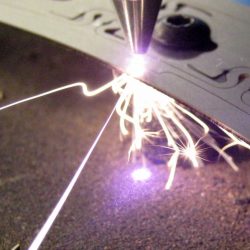Laser cutting in the medical industry
The medical industry is one of the largest on the planet. To many this comes as no surprise as after all, there are literally billions of people on the planet who require healthcare at some point in their lives. Technology and processes have continued to advance, making the industry increasingly efficient, so this helps manufacturers to meet the growing demands placed on the industry.
Laser cutting has helped make a huge difference in many aspects of the medical industry. It has helped to make it more efficient and cost-effective, while also maintaining and even increasing safety standards. Here’s a look at just some of the ways in which laser cutting has helped to transform the medical industry into the success it is on a global scale.
Laser Cutting Allows More Creativity
With constant developments in the laser cutting industry, it allows the medical profession to become more creative in the solutions they create and the treatments they can offer patients. Laser cutting helps medical manufacturers to be more creative with they way they create products and how they produce even the most complex of solutions.
More intricate designs would often cost more, but laser cutting technology helps to keep even the most complex designs affordable. This helps manufacturers to increase sales of their products which, in turn, helps the medical industry support the demands of both the NHS and private healthcare.
Equipment Manufacturing
The medical industry needs equipment that is made for the job at hand. This means equipment that can be used every where from operating theatres to doctors surgeries. In using laser cutting to product these tools and equipment, costs have been reduced compared to traditional methods for production.
This is because lasers make many tasks quicker and easier, reducing the need for otherwise costly man hours. Lasers can also help to make equipment more precisely, resulting in machinery and tools that simply do the job better and faster.
Increased Capacity
Increasing production capacity can be a very costly business. As the world continues to grow, the demand on the medical industry also grows in relation to this. Such costs are often very restricting to medical organisations and healthcare suppliers directly, meaning that they are not able to provide the treatment required as quickly or efficiently as they would like.
With lasers, however, current technologies can be upgraded to allow them to increase their capacity and the rate of treatments and technology that can be developed. This allows them to expand their tools and medical equipment whilst also keeping the costs down, which helps to keep them competitive in the market.
Laser cutting technology is still advancing. As it does, so it will become increasingly effective and increasingly affordable. There may even come a time when it revolutionizes how we know and understand the medical industry to work as a whole.

